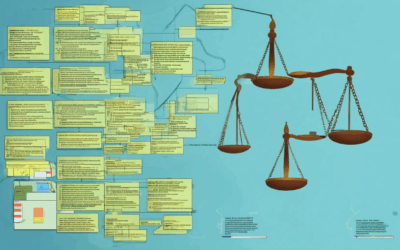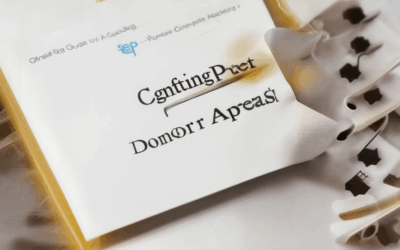“`html
Securing Funding has Never Been Easier with a Well-Crafted Grant Proposal Strategy
Writing a grant proposal is a critical step toward achieving your organizational or personal goals, but crafting an effective grant proposal strategy requires careful planning and execution. Whether you’re applying for funding from the National Science Foundation (NSF) or another reputable organization, a well-thought-out proposal is your ticket to success. This comprehensive guide will walk you through the essential steps, tools, and strategies to create a grant proposal that stands out among competitors and increases your chances of securing the resources you need.
From understanding the basics of grant writing to mastering the art of proposal crafting, this article will provide you with actionable insights and practical tips. Discover how to leverage keywords like “grant proposal guide” and “successful grant proposals” to enhance your strategy, while avoiding common pitfalls such as poor formatting or unclear messaging. By the end of this guide, you’ll have a clear roadmap for developing a grant proposal that not only meets but exceeds expectations.
“`

What are the 5 Rs of grant writing?
The 5 Rs of grant writing are essential principles that guide successful grant seekers in crafting compelling proposals. These principles ensure clarity, alignment, and effectiveness in your application.
-
Research
- Conduct thorough research on the grantor’s objectives, priorities, and funding criteria.
- Analyze past grantees and their projects to identify patterns and successful strategies.
-
Understand the specific requirements of the grant and adhere to the guidelines.
-
Resources
- Utilize available resources such as grant databases, funding directories, and technical assistance.
- Leverage tools like grant management software and proposal templates.
-
Network with peers and mentors who have successfully navigated the grant process.
-
Relationships
- Build relationships with program officers and key stakeholders.
- Engage in conversations to understand their expectations and challenges.
-
Demonstrate how your project aligns with their mission and goals.
-
Readiness
- Prepare thoroughly by gathering all necessary documentation and supporting evidence.
- Review and revise your proposal multiple times to ensure accuracy and clarity.
-
Be ready to respond quickly to any requests for additional information.
-
Resilience
- Stay persistent despite initial rejections, as grant seeking is often competitive.
- Learn from feedback and refine your approach for future applications.
- Keep track of deadlines and submission requirements to avoid missed opportunities.
By focusing on these five Rs, you can enhance your grant writing skills and increase your chances of securing the funding needed for your initiatives.
What are 4 of the 5 steps required for a grant proposal?
NPO Expert provides a comprehensive guide to crafting effective grant proposals. Below are four key steps to consider when preparing your application:
- 1. Define Clear Goals and Objectives
- 2. Develop a Compelling Proposal Narrative
- 3. Gather and Organize Supporting Documents
- 4. Review and Edit for Clarity and Completeness
Start by clearly articulating the objectives of your grant proposal. Ensure these goals align with the mission of your organization and the specific funding requirements of the grantor. This step involves conducting thorough research to identify alignment between your initiatives and the funder’s priorities.
Craft a narrative that effectively communicates the story behind your project. This should include background information, the problem you aim to solve, and the anticipated outcomes. Engage stakeholders and beneficiaries to enrich your narrative and demonstrate broad support for your initiative.
Compile all necessary supporting documents, such as organizational profiles, financial records, and letters of recommendation. These materials should be organized logically to reinforce your proposal’s strengths and credibility.
Before submitting your proposal, thoroughly review it for clarity, grammar, and adherence to formatting guidelines. Ensure all sections are complete and free of errors. Seek feedback from colleagues or mentors to identify areas for improvement.
For more detailed guidance on completing your grant proposal, explore our resources on grant writing and submission . Our experts provide actionable insights and templates to help you succeed.

What is a Grant Strategy?
A grant strategy is a structured approach designed to help organizations secure and effectively manage funding through grant opportunities. It involves careful planning, research, and execution to align an organization’s goals with available funding sources. Below are key components and steps to develop an effective grant strategy:
-
Define Clear Goals : Begin by identifying the specific objectives your organization aims to achieve. Whether it’s supporting a project, expanding programs, or addressing community needs, having well-defined goals forms the foundation of your strategy.
-
Conduct Thorough Research : Investigate potential funders, including foundations, government agencies, corporations, and private donors. Understand their priorities, eligibility criteria, and application processes. Utilize resources like NPO Expert ‘s grant research tools to streamline this process.
-
Prioritize Funding Opportunities : Assess which grants align most closely with your organization’s mission and capabilities. Consider factors like funding size, deadlines, and geographic scope. Prioritize applications based on alignment and feasibility.
-
Craft Strong Proposals : Develop high-quality proposals that clearly articulate how your organization meets the funder’s requirements. Tailor each proposal to the specific funder’s interests and goals.
-
Evaluate and Adapt : After receiving feedback or awards, analyze the outcome to understand what worked and what didn’t. Use this insight to refine future grant strategies and explore new funding avenues.
By leveraging resources like NPO Expert ‘s fundraising tools and staying informed about competitors such as Foundation Directory and GrantStation , you can enhance your organization’s chances of securing grants and achieving your mission-driven goals.

Four Key Elements of a Grant Proposal
A well-structured grant proposal is essential for capturing the attention of funding bodies and increasing your chances of securing the necessary resources. Below are the four primary elements that every grant proposal must include:
1. Project Title
The project title serves as the first impression of your proposal. It should be concise, descriptive, and aligned with the objectives of the grant. Use clear and specific language to convey the essence of your initiative. For example, if applying for a health-related grant, a title like “Implementing Community Health Programs in Underserved Areas” effectively communicates the scope and purpose.
2. Abstract
The abstract is a brief summary of your proposal, typically limited to 150-250 words. It should provide a snapshot of your project, including its goals, methods, expected outcomes, and significance. Clearly articulate how your project addresses the problem or opportunity it aims to solve. For instance, “This project will develop a sustainable water filtration system for rural communities affected by natural disasters, reducing contamination rates by 30%.”
3. Budget
The budget section outlines the financial requirements of your project, detailing how funds will be allocated. Break down expenses into categories such as personnel, materials, travel, and equipment. Provide a rationale for each expense to demonstrate cost-effectiveness. For example, “The total budget of $50,000 includes salaries for 10 team members, training materials, and field research equipment.”
4. Key Personnel
Clearly identify the individuals involved in the project, including their roles and expertise. This section builds credibility and assures funders that your team is capable of executing the proposed work. Include biographies or resumes of principal investigators and key contributors. For example, “Dr. Jane Doe, an expert in environmental science, will lead the project alongside Ms. Sarah Johnson, who has extensive experience in community outreach.”
By incorporating these elements thoughtfully and tailoring them to the specific grant guidelines, you can create a compelling proposal that stands out to reviewers. Need more guidance? Explore our comprehensive guide on grant writing tips or check out our resources on funding opportunities .
The 3 Cs of Proposal Writing
The success of a proposal hinges on three critical factors: Clarity, Consistency, and Convincingness. These principles ensure that your proposal is well-structured, easy to understand, and compelling enough to capture attention.
-
Clarity :
A clear proposal avoids confusion and ensures stakeholders understand your goals. Use simple language, organize ideas logically, and provide concise explanations. Avoid jargon unless necessary, and anticipate questions by addressing potential concerns upfront. -
Consistency :
Consistency builds trust and demonstrates professionalism. Maintain uniformity in formatting, tone, and terminology throughout the proposal. Align your objectives with the organization’s mission and values, and ensure all sections reinforce the same message. -
Convincingness :
A convincing proposal persuades decision-makers by showcasing benefits and outcomes. Highlight how your solution solves problems, meets needs, or achieves desired results. Use data, case studies, or testimonials to strengthen your argument.
By focusing on these three Cs, you can create proposals that are impactful, professional, and aligned with the expectations of your audience.
For more tips on crafting effective proposals, explore our resources on nonprofit proposal writing .

What Not to Include in a Grant Proposal
When crafting a grant proposal, it’s crucial to focus on clarity, relevance, and alignment with the funding source’s objectives. Here are key elements to avoid:
- Ambitious Objectives : Avoid setting objectives that are overly broad or lack a clear endpoint. Ensure they align with the funder’s goals and are feasible to execute.
- Irrelevant Details : Stick to the project’s scope. Avoid including extraneous information that doesn’t directly relate to the proposed work.
- Unaligned Scope : Ensure your project’s goals and methods resonate with the funder’s mission and priorities.
- Vague Outcomes : Clearly define measurable outcomes. Vagueness can undermine confidence in your proposal’s potential impact.
- Lack of Community Impact : Demonstrate how your project benefits the community or society. Funders often prioritize initiatives with clear public benefit.
- Poor Evaluation Plan : Include a robust plan for assessing progress and outcomes. A strong evaluation framework enhances credibility.
- Inadequate Budget : Propose a realistic and justified budget. Overly high or vague costs can raise red flags.
- Missing Timeline : Provide a logical and time-bound implementation plan. A clear timeline shows organization and commitment.
- Unclear Team Roles : Define the roles and responsibilities of key personnel involved in the project. Ambiguity can lead to miscommunication and inefficiency.
- No Innovation : Highlight any unique approaches or methods your project employs. Distinguishing yourself can set your proposal apart.
By avoiding these pitfalls, you enhance the likelihood of securing funding and demonstrating the project’s value to stakeholders.




0 Comments